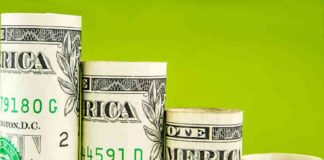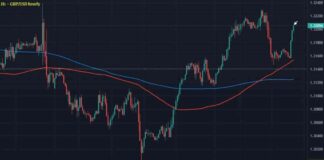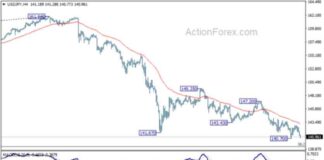Goldman Sachs, a renowned financial institution, has recently conducted a thorough analysis focusing on effective FX hedges amidst equity market losses. In a market environment where US equities and yields are on the decline, it becomes crucial for investors to identify reliable currency positions to navigate the volatility effectively.
Safe-Haven Currencies: Long Positions in JPY and CHF
According to Goldman Sachs, long positions in the Japanese Yen (JPY) and the Swiss Franc (CHF) emerge as the most effective hedges in scenarios involving declines in both US equities and yields. These safe-haven currencies are known for their stability and tend to appreciate during times of market turmoil, providing a cushion for investors against potential losses in other asset classes.
Investors often flock to currencies like JPY and CHF during periods of uncertainty due to their perceived safety and liquidity. These currencies act as a hedge against riskier assets such as stocks and bonds, offering a sense of security in the midst of market downturns.
Emerging Market and G10 Shorts: MXN and AUD
Goldman Sachs also highlights shorts in the Mexican Peso (MXN) and the Australian Dollar (AUD) as effective hedges within the broader FX complex. Emerging market currencies like MXN are often more volatile and sensitive to global economic conditions, making them attractive options for investors looking to diversify their currency exposure.
On the other hand, the Australian Dollar (AUD) is considered a G10 currency that is closely tied to commodity prices, particularly the price of iron ore. As a result, shorts in AUD can serve as a hedge against declines in commodity markets, providing a level of protection for investors with exposure to commodity-related assets.
Preferred Hedges Across Scenarios: Short USD/JPY, USD/CHF, and Long USD/MXN
For investors looking for hedges across multiple scenarios, Goldman Sachs recommends short positions in USD/JPY and USD/CHF, along with long positions in USD/MXN. These currency pairs are considered the best hedges due to their effectiveness regardless of oil price shifts and other market fluctuations.
Shorting the US Dollar against the Japanese Yen and the Swiss Franc can be a strategic move during times of market uncertainty, as both currencies tend to appreciate when the US Dollar weakens. Conversely, going long on the US Dollar against the Mexican Peso can provide a hedge against volatility in emerging markets, offering a balance to investors’ portfolios.
Cost Considerations: Shorts in AUD or GBP
While the aforementioned strategies are effective hedges, it is important to consider the costs associated with implementing these positions. The elevated carry costs linked to certain strategies may deter some investors from fully committing to these hedges, prompting a preference for alternatives with lower costs.
As a cost-effective alternative, shorts in the Australian Dollar (AUD) or the British Pound (GBP) are favored by Goldman Sachs for their reliable response to recessionary shocks, minimal dependence on oil prices, and lower carry costs. These currency pairs offer a balance between effectiveness and affordability, making them attractive options for investors seeking to hedge against market volatility without breaking the bank.
In conclusion, Goldman Sachs’ analysis provides valuable insights into navigating FX markets amidst equity market losses. By strategically positioning in safe-haven currencies like JPY and CHF, along with shorts in MXN and AUD, investors can mitigate risks and protect their portfolios during turbulent times. While cost considerations play a significant role in hedging decisions, options like shorts in AUD or GBP offer a balance between effectiveness and affordability, allowing investors to navigate market uncertainties with confidence.

















